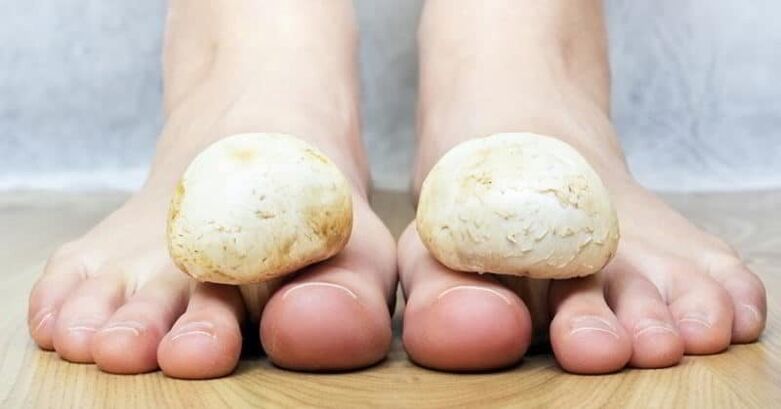
The therapy of fungal infections on the feet with local preparations is carried out on an outpatient basis. For a speedy recovery, it is important to follow medical recommendations, know how to treat fungus on the legs at home and how to properly carry out the necessary procedures.
General rules
Therapeutic and hygienic measures should be carried out regularly, treatment should not be interrupted until the fungus is completely eliminated. The duration of the recovery process depends on the degree of neglect of the disease and the area of \u200b\u200bthe lesion.
For a successful outcome of treatment and the prevention of infection of others, it is recommended to follow the basic rules:
- For the entire period of treatment, you should refuse to visit swimming pools, saunas, beaches, pedicure rooms.
- The patient must have individual means of hygienic treatment of the feet: files, pumice stone, soap, towels, etc.
- Shoes must be thoroughly disinfected and dried. The insoles and the inner surface of the shoes can be treated with special solutions or sprays.
- Feet must always be kept dry. The causative agents of fungal diseases actively multiply in a warm and humid environment. After water treatments, the feet should be wiped with a clean towel, and in case of excessive sweating of the legs, use talc, powder and powder.
- Particular attention is paid to hosiery. It is better to choose socks made of natural cotton. Such material absorbs moisture well and provides normal ventilation of the skin of the feet. Socks should be changed as often as possible, and used products should be boiled out.
- Drug treatment is carried out strictly according to the instructions of the attending physician, after confirming the diagnosis with the results of laboratory tests of the infected material.
The calloused skin of the fingers and soles must be constantly removed with a special foot brush or pumice stone. Otherwise, cracks can appear, through which the fungus penetrates into the deep layers of the epidermis and into the bloodstream.
Comfortable shoes made of natural materials should be preferred to avoid accumulation of excess moisture.
foot baths
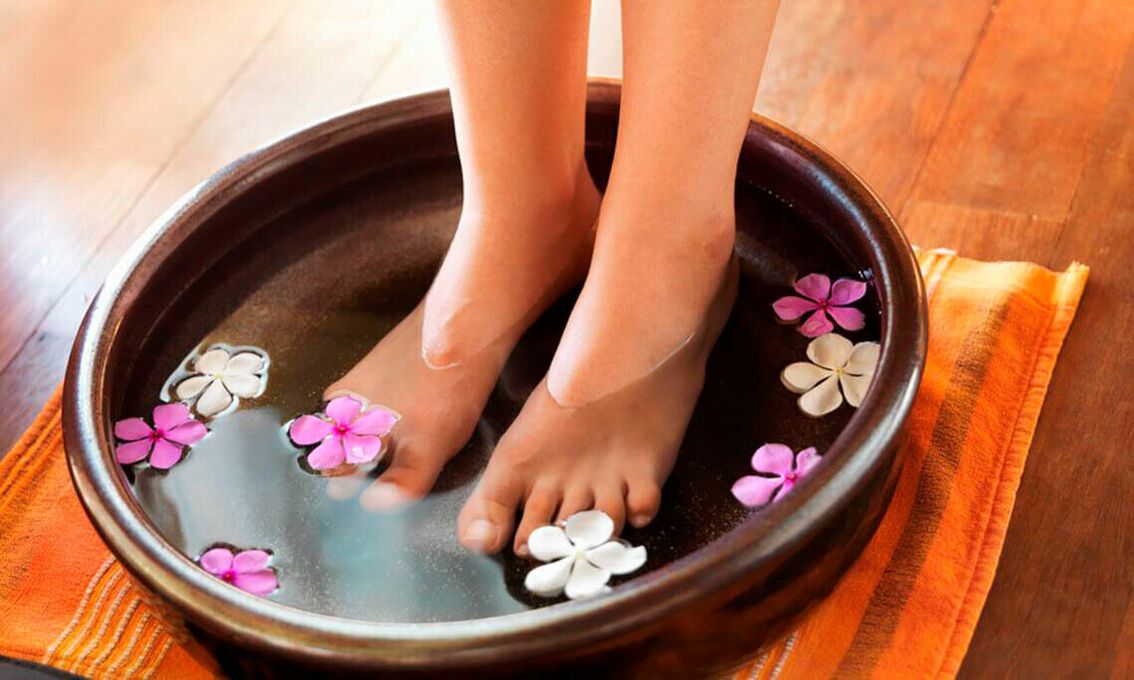
Therapeutic baths are an indispensable component in the treatment of fungal diseases of the legs at any stage of the development of the infectious process. Procedures for steaming feet in hot water with the addition of various active substances are a preliminary stage before the use of the main antifungal drugs.
Foot baths can be used twice a day or daily before bed. The duration of the procedure depends on the composition of the bath, but does not exceed half an hour.
medicinal herbs
For antifungal foot baths, decoctions of medicinal herbs are used:
- plantain;
- wormwood;
- Burdock;
- spurge;
- Yarrow;
- marigolds.
Herbs can be combined or steamed separately. For the best effect, the brew must be strong enough. The required amount of vegetable raw materials must be poured with boiling water. As soon as the temperature of the decoction becomes acceptable for the skin, you can put your feet in the bath and soak your feet for 15-20 minutes.
celandine
In the fight against fungus on the legs, celandine preparations are often used. For the preparation of foot baths, it is recommended to use dried celandine. You can buy it at the pharmacy or prepare it yourself.
The decoction is prepared at the rate of 8 tablespoons of grass per 2 liters of boiling water, then cooled to a temperature of 50 ° C and placed in a convenient container. Feet should be kept in the bath until it cools down. The duration of treatment is 20 days.
Vinegar
An acidic environment has a detrimental effect on the pathogenic microflora that causes mycosis. As an effective home treatment for athlete's foot, folk remedies use baths with vinegar essence.
Vinegar is taken at the rate of 100 ml of essence per 2 liters of warm water. The approximate duration of the procedure is one third of an hour. Such a home remedy for fungi can significantly speed up the treatment of modern medicines.
soda and salt
Using saline and soda solutions to soak your feet can help fight athlete's foot in its early stages. There are many ways to prepare foot baths with salt and soda at home. The simplest and most effective recipes:
- In two liters of warm water, dissolve 2 tablespoons of table salt and baking soda and soak your feet for up to 20 minutes.
- Add a similar amount of strong decoction of oak bark, a few drops of mint oil and tea tree essential oil, 2 tablespoons of soda, 2 tablespoons of sea salt to two liters of boiling water. The steam duration is half an hour. The duration of treatment is 14 days.
- In warm water, stir 1 tablespoon of soda and coarse salt, add a couple of tablespoons of liquid soap with antibacterial properties (tar can be used). Steam the feet in the prepared solution for up to half an hour, at the end of the procedure allow the feet to dry without wiping or rinsing with clean water.
Salt helps strengthen nails and regenerate epidermal tissue, and soda softens skin, cleans and disinfects the surface of the feet. Salt solutions with an admixture of iodine have a pronounced fungicidal effect.
Foot soaks with vodka, ammonia, propolis, strong coffee, birch tar, hydrogen peroxide, and garlic juice are of great help.
compresses, rubs, lotions
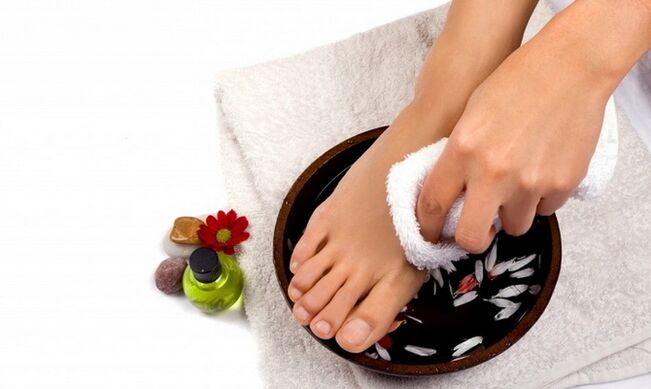
You can get rid of the fungus on the legs with the help of compresses and various liniments according to alternative medicine recipes. The procedure is carried out after careful treatment and steaming of the legs.
The healing mass is applied to the affected area, fixed with a gauze bandage and insulated from above with clean socks. If the composition of the compress does not contain aggressive substances, then the bandage is left overnight.
The most popular recipes for homemade antifungal compresses for treating athlete's foot:
- Finely chopped fresh rowan leaves are applied to the infected skin, covered with a burdock leaf and wrapped in cellophane.
- Apply 35% salicylic ointment evenly to the lesions of the fungus and wrap with cling film. Change the bandage once a day.
- Pass a few cloves of garlic through a press, stir in the same amount of butter until smooth. Apply the resulting mass to the sore spot, wrap with a film and leave overnight. Garlic will sting, but it's a great way to quickly cure athlete's foot.
- Onion gruel is used in its pure form for compresses, you just need to change bandages as often as possible. If the itching becomes unbearable, you can dilute the onion with petroleum jelly in a 1: 1 ratio.
- Desserts vinegar compresses show good results. It is more convenient to use a cotton pad dipped in a weak solution of vinegar essence.
- Alcohol wraps help with athlete's foot. A small piece of linen cloth soaked in an aqueous solution of ammonia is wrapped around a sore leg and insulated with polyethylene. The course is designed for 7-10 days.
- Mashed potato sprouts insist on vodka for a day. Ready porridge is used for foot compresses before bedtime.
- If the fungus is localized in the interdigital folds, you can apply a slurry of peppermint grass and salt to the affected skin. This remedy perfectly fights the manifestations of itching, removes an unpleasant odor and other symptoms.
The method of rubbing the affected skin with birch tar, an alcohol solution of iodine, garlic juice, tea tree oils and celandine will help to quickly get rid of the fungus on the legs at home.
It is recommended to use many pharmaceutical local antifungal agents in the form of compresses when mycosis has reached an advanced stage.
Medicinal antifungals
The fastest way to cure a fungal infection is the right combination of folk remedies and antifungal drugs. Antifungal drugs are divided into two main groups: for local and systemic use.
Oral antifungal drugs are prescribed for drug therapy of a fungus in advanced form without contraindications. Taking tablets is associated with a risk for the liver, they should be taken only in the dosage prescribed by the doctor.
The choice of local drugs depends on the type of causative agent of the disease and the patient's financial capabilities. It can take several months to get rid of the fungus, and not everyone can buy expensive medicines.
Preparations for external use are available in the form of creams, gels, ointments, sprays, varnishes and solutions. Well-known pharmaceutical companies produce a whole range of products for the complex treatment of fungi.
Regardless of the form, brand, and price range, the main difference is the type of active ingredient in the drug. This criterion determines the effectiveness of the drug in relation to a specific type of infectious agent.
Antifungal drugs contain fungistatic substances: sertocanazole, bifonazole, ketoconazole, oxiconazole, terbinafine, ciclopiroxalamine, amorolfine.
It is easier to defeat the fungus on the legs with the help of local preparations in the early stages of the development of the disease, when the first signs of infection appear, if treatment is carried out continuously according to the attached instructions.
Personal hygiene rules to prevent fungal infections on the legs
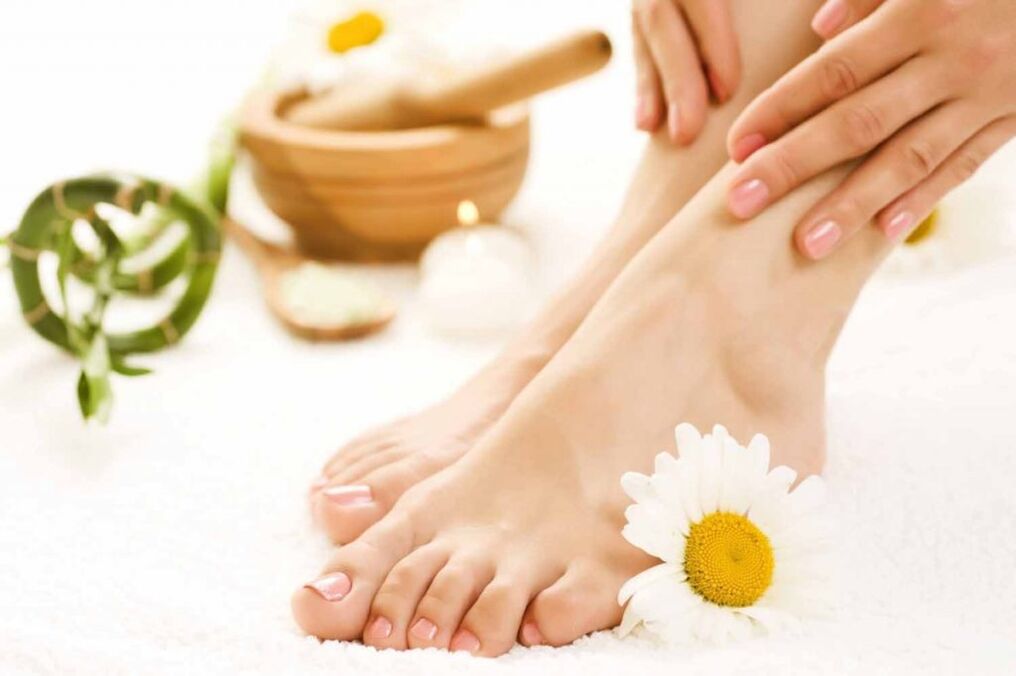
Athlete's foot prevention consists primarily of personal hygiene measures aimed at preventing infection and creating a microorganism-hostile environment.
It is important to remember that mycotic lesions of the feet can last a long time, almost without manifesting themselves, they are characterized by a chronic relapsing course.
Pathogenic microorganisms affecting the foot are unusually persistent, they love moisture, wet, unventilated interdigital folds of the feet, the lower and lateral surfaces of the sole.
Below is a short list of personal hygiene practices (known but not always followed) to avoid contracting this compulsive infection:
- Keep your feet dry and cool;
- Timely and regularly perform a pedicure using tools that have undergone proper disinfection treatment, use modern auxiliary and care products.
- Wash your feet daily with warm soapy water, use antibacterial soap if necessary, wash your feet several times a day;
- Dry your toes from base to tip, the skin between your fingers, the entire foot;
- Fight against sweaty feet
- If necessary, use antifungal foot powders - antifungal cosmetic and medicinal creams, gels, nail polishes;
- Go barefoot, barefoot at least at home, in the country;
- Keep your toes slightly apart;
- Do not go barefoot in locker rooms, showers, gyms, fitness clubs and other public places - wear flip-flops (rubber slippers, waterproof slippers);
- Don't use someone else's sponge, washcloth, towel, or slippers (even within the family);
- In case of infection, separate a separate towel for the affected area or use disposable paper towels;
- Wear comfortable, well-fitting shoes made of leather and other natural materials;
- Avoid rubber and plastic shoes - a favorable environment for the growth of dermatomycetes;
- Keep shoes clean and dry, air them, treat the inside of shoes with antifungal powder or aerosol;
- Wear light, well-ventilated shoes in summer;
- Change your sneakers on time; if they can be washed, wash them at least once a month;
- Change socks (knee socks, stockings, pantyhose) more often, especially with hyperhidrosis, if necessary - more often;
- Wear socks made of hygroscopic materials (natural fibers or special synthetics);
- Wash socks twice in very hot water to kill fungal spores; after washing with washing powder, rinse the socks thoroughly so as not to worsen the condition of the skin;
- For the proper sanitary and hygienic condition of sinks, showers, bathtubs, sinks, wash them regularly, use special products;
- Do not self-medicate, consult a doctor in the early stages of a fungal disease; do not put others at risk of infection;
- Be especially careful with the presence of fungal diseases in households;
- Help elderly family members comply with dermatologists' prescriptions and the necessary sanitary and hygiene requirements to treat this disease.
Quitting bad habits is an essential part of preventing athlete's foot
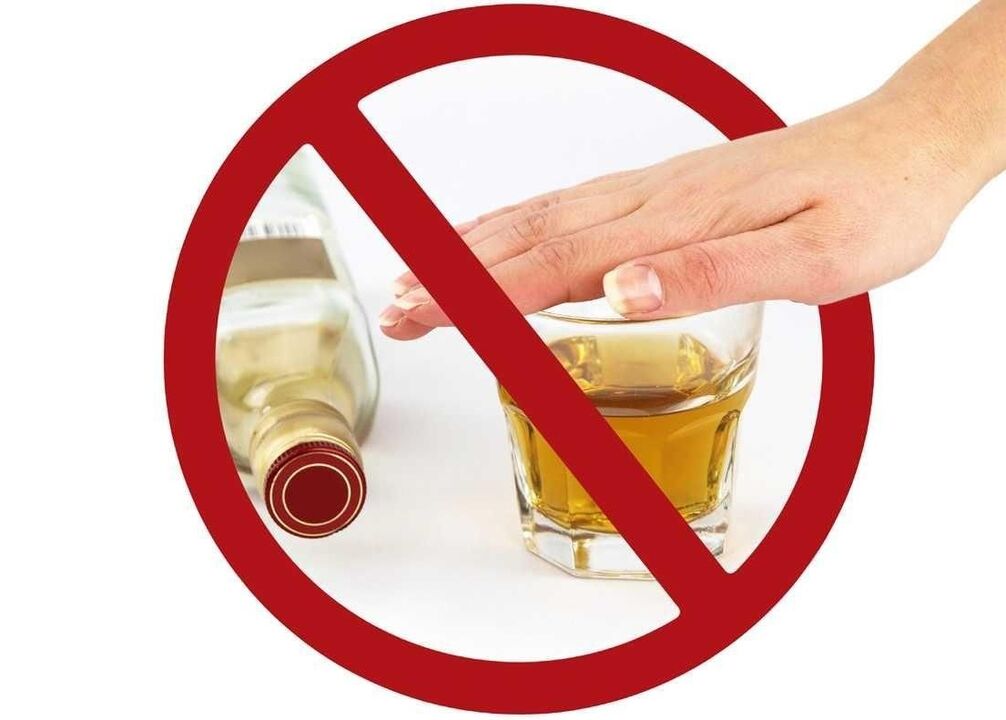
Bad habits (excessive alcohol consumption, smoking, drug addiction), improper wakefulness - sleep, work - rest, inappropriate behavior in stressful situations usually lead to a serious decrease in immunity, disorders of blood circulation.
Inappropriate unbalanced diet, excessive consumption of light carbohydrates, lack of exercise - up to obesity. Against the background of weakened immunity, circulatory disorders and overweight, a favorable climate is formed for infection and the development of infection into a generalized dangerous disease.
This indicates the urgent need to give up bad habits.
Folk and pharmacy remedies for the prevention of athlete's foot
When choosing folk remedies for the prevention of athlete's foot, it should be remembered that fungi do not like an acidic environment, to stop the growth of fungi, a slightly acidic environment (pH 5. 5) is enough. For prevention, it is advisable to regularly:
- Treat the feet with diluted lemon juice or fermented milk products (kefir, sour milk, etc. )
- Take baths with salt water (2 tablespoons of salt in 0. 5 liters of water), or light vinegar water (1 cup of vinegar in 3 to 4 liters of water), or soda water (1 tablespoon of sodium bicarbonate in 1 liter of water).
Almost everyone has experienced a yeast infection and knows that getting rid of it is very difficult. To cure the disease, you need to spend a lot of time, effort and money, especially at an advanced stage of the development of the disease. Consider how to treat a fungus on the legs at home in order to forget about the disease as soon as possible.
What you need to know about mushrooms
Athlete's foot is a contagious, infectious disease that affects a person's skin and nails. Most often this disease affects adults and the elderly. The infection takes root perfectly in warm and humid places: in baths, saunas, showers. You can get infected when visiting public places barefoot, trying on shoes, and during a pedicure with insufficient sterilization of instruments.
On a note!
Mycosis develops with a weakened immune system and when infection enters wounds or cuts.
The fastest way to get rid of the fungus is to start treatment when the first signs of the disease appear. It is quite difficult to self-diagnose mycosis, especially at the initial stages. Usually the infection does not manifest itself in any way, then itching, an unpleasant smell from the feet, peeling and discoloration of the nail appear. As soon as you notice any of these symptoms, contact a dermatologist immediately. After a visual examination and tests, he can confirm the exact diagnosis and then make a detailed treatment plan.
If you don't start fighting the disease, you can be completely nail-less. At the initial stage, the doctor prescribes drugs and alternative methods that can be used at home to treat mycosis.
Medicines for the treatment of fungi
There are various drugs for eliminating mycosis. Modern pharmacy products allow you to quickly cure feet from a fungus. They kill the causative agent of the disease and prevent further multiplication of the infection. Medicines are available in different release forms, depending on the localization of the fungus and the size of the affected area, the type of remedy is selected.
Before using any means to treat fungus, consult a doctor. He will tell you how to quickly get rid of the fungus on your feet at home, taking into account your condition and possible contraindications.
Important!
It is undesirable to self-medicate, if the means used are not appropriate, complications may arise and the situation may worsen.
To remove the fungus from the soles of the feet it is best to use ointments, it is convenient to use suspensions on the skin between the fingers, as well as creams and varnishes for nails.
Important!
The scheme of using drugs depends on the type of pathogen and the depth of the lesion. It can take 9-12 months to defeat advanced stage mycosis.
Folk remedies for treating fungus on the legs
Traditional recipes will help get rid of mycosis at the initial stages of the development of the disease. Numerous home remedies for treating toe fungus allow the use of common products that are easy to find in every home.
The main thing is to follow the recommendations for use and not interrupt therapy until a stable result is obtained.
Important!
Before using ointments and compresses, it is necessary to steam the legs in a salt or soda bath. Add 1 tablespoon to 1 liter of hot water. l. salt and soda. Warm up legs for 10-15 minutes, treat feet and fingers with pumice stone and nails with a soft file. Then continue further care.
iodine
An alcoholic solution of iodine is a powerful antiseptic with a pronounced antifungal effect. It destroys the protein structures that make up the causative agent of mycosis.
Before using recipes with iodine, be sure to test for an allergic reaction. Many people have an intolerance to this medicine. The drug should not be used by people with thyroid disease.
Before going to bed you can take an iodine bath. To do this, dissolve 3 tbsp. l. Iodine in 5 liters of hot water, support your feet for 20 minutes and dry your feet thoroughly with a towel. The treatment is carried out every other day.
Mix alcohol and iodine in equal proportions, apply the resulting liquid only to the affected areas, contact of the solution with healthy tissue can cause epidermal burns. Treat your feet 5-10 days before bedtime.
hydrogen peroxide
The tool is known for its antiseptic properties and ability to soften tissues. It is used in numerous recipes, including to fight a fungal infection.
Bath with hydrogen peroxide against nail fungus. Pour 100 ml of peroxide into 2 liters of warm water, steam your feet for 15-20 minutes, then wipe dry and treat the skin with a pumice stone or brush, trim your nails.
Apply a 3% solution of peroxide to a gauze bandage and put it on the injured area for 30-40 minutes. The process must be repeated twice a day.
Vinegar
Mycosis has a protein structure, so it is afraid of deviations from normal acidity. Acetic acid destroys the cells of the causative agent of the disease, which turns out to get rid of the fungus on the legs.
9% apple cider vinegar diluted in equal parts with water is used for treatment. Dampen a sock or cotton pad (depending on the size of the affected area) and put it on or on your foot. The compress is kept for 20 minutes, the procedure is repeated twice a day for 10 days.
Mix equal parts 70% vinegar and vegetable oil. Rub the resulting mass daily for a month or until full recovery.
Pour 1 egg 30 g water and vinegar, mix thoroughly. Lubricate the affected areas of the leg with this remedy every other day until the manifestations of the fungus are completely eliminated.
The tool must be used with caution: before use, it is recommended to apply a greasy cream to healthy areas of the skin to protect the skin from burns.
celandine
Medicinal herbs help get rid of many diseases, including skin ones. A home remedy for fungi with celandine will effectively get rid of the disease at the initial stage of development and will be an effective form of therapy for removing an old form of mycosis. This poisonous plant inhibits the activity of the causative agent of the disease, causing the mycotic cells to die. In folk recipes, both flowers and celandine leaves are used.
Apply fresh celandine juice to cracks, damage and rashes. It clears the infection and helps speed up the recovery process. Treat the feet every three days until the symptoms of the disease are completely eliminated.
Pour dried celandine with a glass of boiling water and boil over low heat for 10 minutes. Pour the resulting liquid into a container and lower your legs there to steam for 20 minutes. This bath softens the skin and reduces swelling.
Mix dry celandine and tea oil thoroughly until a slurry forms. Apply the resulting mass to the affected area of \u200b\u200bthe leg and fix it with a bandage. The compress is made before bedtime. Rinse your feet with warm water in the morning.
Fungal infections are the most common type of disease, affecting approximately 20% of the world's population. Getting rid of the disease is not so easy, but with the right therapy it is possible. Treating a fungus on the legs at home is most effective at the initial stage of the development of the disease. There are numerous ways to get rid of mycosis at home: pharmaceutical preparations or folk recipes. It is best to start therapy only after consulting a doctor, he will help you choose the most effective treatment.


















